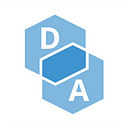Innovate your data. Use a monetization strategy.
What is data monetization? According to McKinsey, it is the process of using data to increase revenue, which the highest performing and fastest growing companies have adopted and made an important part of their strategy. Internal or direct methods including using data to make measurable business performance improvements and informed decision making. External or direct methods include data sharing to gain beneficial terms or conditions from business partners, information bartering, selling data outright, or offering information products and services (Definition of Data Monetization — IT Glossary | Gartner).
How to deploy a data monetization strategy
Companies that innovate through data monetization recognize this, monetization can be tricky. Get it right, and you have happy customers and users who are willing to pay for your product. But mis-prioritize and your audience numbers quickly drop, along with your revenue. Building data monetization based on the principles of ‘trusted data’ ( mitigates the risk of mis-prioritisations).
There is no clear-cut answer how a data-driven product generates revenue, or when that is appropriate. And there will, of course, be some products that never monetize.
Having a strategy will deliver guidance. A data monetization strategy is, simply put, a plan to generate revenue for data-driven products. Like with any plan, it guides and brings structure. It is not something that is fixed — it should be flexible enough to develop with the product, the market the product exists in and its users. Goals can and will change over time, and so strategies need to evolve to continuously achieve the goals they’re designed to target. Data products can be based on loyalty & subscription models or a on-time purchase model. It is important to understand at the beginning of the strategy which model(s) the data can leverage to create focus and scalable results.
Data monetization strategy must be built upon the following pillars:
* Understanding how data can be converted into value (see below) and the associated opportunities and challenges of data-based value creation;
* Strategic insights into improving and preparing data to support monetization;
* Strategic insights in the potential value, markets and ecosystems.
Opportunities for monetization
Data driven business models help to understand how data can discover new opportunities. This can be focused on value for efficiency (reducing costs and risks), value for legislation (comply with relevant regulations) and value by maximizing profits, by increasing impact on customers, partnerships and markets. This can include embedding data models, metadata and analytics into products and services. Data monetization needs to be scalable, flexible and user friendly, thereby providing advantages for the company and its customers.
Indirect monetization includes data-drive optimization. This involves analyzing your data to gather insights in opportunities to improve business performance. Analytics can identify how to communicate best with customers and understand customer behavior to drive sales. Analytics can also highlight where and how to save costs, avoid risk and streamline operations and supply chains.
“Having a full understanding of monetization possibilities will help to keep an open mind.”
Direct monetization of data is where things get interesting. It involves selling direct access to data, e.g. to third parties or consumers. This can be in raw form (heavily anonymised due to privacy regulations), aggregated, metadata only or transformed into analysis and insights.
Data-as-a-service
This is the most direct data monetization method. Data is sold directly to customers (or shared with partners for a mutual benefit). The data is e.g., aggregated and/or anonymised, to be fully in accordance with legislation. And to enable trusted data. Buyers mine the data for insights, including combining it with their own data. Or use it for AI solutions within a software. Ecosystem play is the newest area for Data-as-a-service.
Insights-as-a-service
This applies analytics to (combined) internal and external data. It focuses on the insights created using data, rather than the data itself. Either the insights are sold directly or provided as e.g. analytics enabled apps.
Ecosystems-as-a-service
This is a more flexible type of data monetization. The data ecosystem provides highly versatile, scalable and shareable data and/or analytics, when needed in real-time. Standardized exchanges and federated data management enable using data from any source and any format.
Analytics-as-a-service
This is the most advanced and exciting way of monetizing data. Analytics-as-a-service seamlessly integrates features such as dashboards, reports and visualization to new and existing applications. This opens up new revenue streams and provides powerful competitive advantage.
Having a full understanding of monetization possibilities will help to keep an open mind. Where many companies are focusing on analytics products & services, there are more opportunities! Always stay within legal & ethical boundaries, but explore all opportunity formats to grasp new markets.
